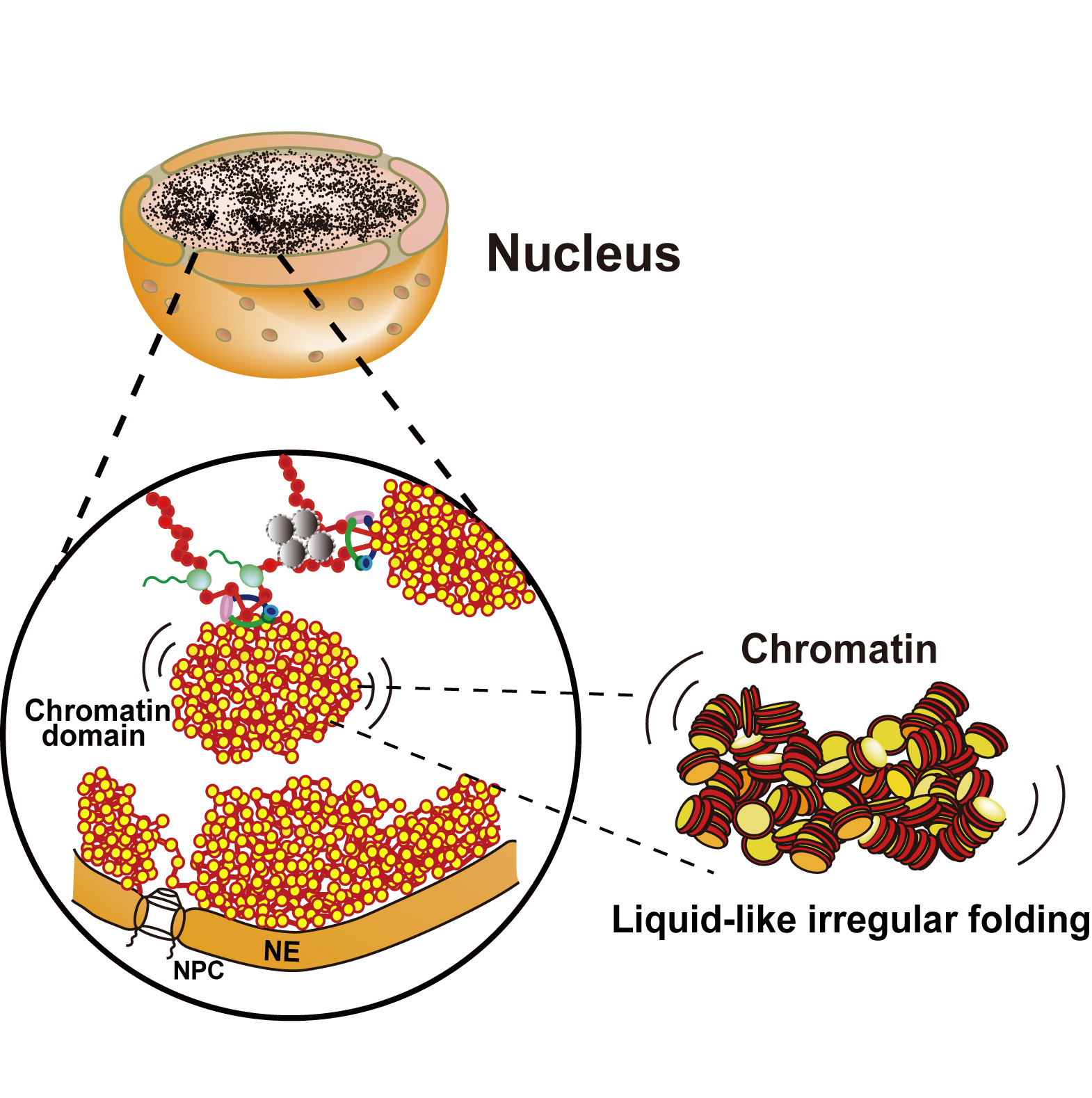Maeshima Group • Genome Dynamics Laboratory
3D-organization and dynamics of human genome
Faculty
Research Summary
Our research interest is to know how a long string of human genome is three-dimensionally organized in the cell, and how the human genome is read out for cellular proliferation, differentiation and development. For this purpose, we are using a unique combination of molecular cell biology and biophysics, such as single molecule imaging, superresolution imaging, X-ray scattering and computational simulation.

Selected Publications
Maeshima K, Iida S, Shimazoe MA, Tamura S, Ide S. Is euchromatin really open in the cell? Trends Cell Biol. 2024 Jan;34(1):7-17.
Nozaki T, Shinkai S, Ide S, Higashi K, Tamura S, Shimazoe MA, Nakagawa M, Suzuki Y, Okada Y, Sasai M, Onami S, Kurokawa K, Iida S, Maeshima K. Condensed but liquid-like domain organization of active chromatin regions in living human cells. Sci Adv. 2023 Apr 5;9(14):eadf1488.
Maeshima K. A phase transition for chromosome transmission when cells divide. Nature. 2022 Sep;609(7925):35-36.
Iida S, Shinkai S, Itoh Y, Tamura S, Kanemaki MT, Onami S, Maeshima K. Single-nucleosome imaging reveals steady-state motion of interphase chromatin in living human cells. Sci Adv. 2022 Jun 3;8(22):eabn5626.

















